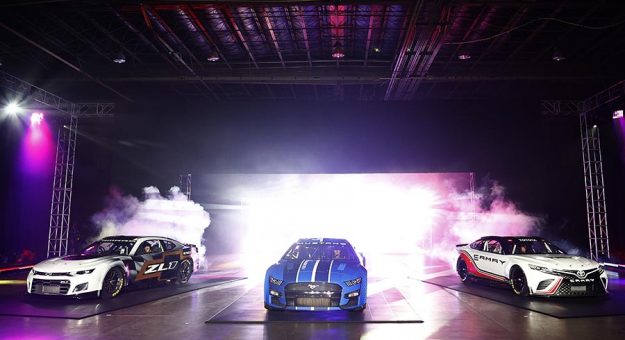David Wilson seemed like a man in confession.
Sitting in his office on the other end of an April 23 Zoom call, the president of Toyota Racing Development spoke as if a 3,300-pound weight had been on his shoulders for years.
That weight has a name: The Next Gen Car.
In two weeks, one of the biggest shifts in NASCAR’s 70-plus year history would be revealed to the world.
“We as an industry are all carrying that pressure on our shoulders to make sure we can deliver,” Wilson said. “As much as we love how we compete and the challenge and all of that, what we have today is simply not working, it’s not sustainable. … And if we didn’t get as aggressive as we have gotten with Next Gen, the sport would be in serious peril.”
No pressure, then.
WHAT’S IN THE BOX?
Less costly, better competition and more “stock.”

Those were among the goals of a project the entire NASCAR industry took up roughly four years ago, was delayed by a pandemic and is now eight months from real competition.
Its May 5 unveiling showed off the results that many, like Wilson, hope will jump start NASCAR’s future.
Those results include:
• Independent rear suspension;
• Symmetrical car;
• Rack-and-pinion steering;
• Composite body;
• Single lug nut wheels.
How many of these elements should have been introduced years ago?
“Everything in my opinion,” said Eric Warren, director of NASCAR programs at General Motors. “It was just when did it make the most sense to do it?”
For roughly a decade Warren was the technical director at Richard Childress Racing, the team that produced the Next Gen prototype that debuted at Richmond (Va.) Raceway in October 2019.
Warren was appointed to his position at GM in late 2020.
“You’d look at each individual change and ‘Well, I don’t wanna spend the money on that,’” said Warren. “That’s kind of where I say Richard Childress really got in there with some of the owners and (NASCAR CEO and Chairman) Jim France and said, ‘We need to do this’ and I think at that point in time you’re like, ‘All right, let’s get all of them in there at once.’”
There will be “naysayers” of the car says Pat DiMarco, Ford’s NASCAR supervisor.
But that comes with the territory.
“There are also naysayers today, complaining that we run a 1950s truck suspension and we still run a circulating ball steering gear,” added DiMarco. “We’ll have naysayers that are complaining that it’s too far from what NASCAR is today. … To me, the car will be more relevant.”
That includes the change to wheels with one lug nut, down from the traditional five.
“It’s safer, which is the key part,” said Warren. “Some of the technical reasons behind it is the hubs … the bearings that have been used are really not designed for the loads and the speeds that the cars are going in. … I think, from a durability and a safety standpoint, (it) should have been done, or you would have wanted it to have been done a long time ago.”
NEW-CAR FEEL
There are many unknowns surrounding how the Next Gen Car will change the on-track product in the NASCAR Cup Series.
There does seem to be one area of consensus.
“We’re very excited about, and more confident about, how this car is going to race on the road courses,” said Wilson.

Kurt Busch agrees with him.
As of early May, the 2004 Cup Series champion was one of two drivers to pilot the Next Gen Car more than once. The other was Martin Truex Jr.
Busch and Truex tested it on the oval and road course at Charlotte Motor Speedway at the end of 2020 and then again to start 2021.
On the road course, Busch said it was “hands down better than what we have (now). … It had all the crispness in the feel. … It was two seconds quicker, easily. I wasn’t even pushing to go harder through the ROVAL section,” Busch added.
This is important given NASCAR’s dramatic shift in track scheduling. This season, the Cup Series will compete on a record seven road courses.
How does the car handle on a speedway?
“It was slower,” said Busch. “It was a feel of where does the rear sit with this rear suspension being independent? Where’s the stagger? Then we started working on the aero components, as well on corner exit. It’s like I was juggling bowling balls and tennis balls and sorting them out.”
Fourth-year Cup driver William Byron was an early Next Gen tester. He drove it at Auto Club Speedway in March 2020.
What will it be like for younger drivers like him to adapt to the new car?
“I think there are some things that you have in your memory bank that you’re going to have to somewhat erase,” said Byron. “Maybe the way that you time restarts and the way that you get through the gears (with a sequential shifter) and some of those things. Maybe the way the side-draft works. … With our current car, you kind of get away with a lot if the car is loose and not necessarily wreck.”
Click below to continue reading.
